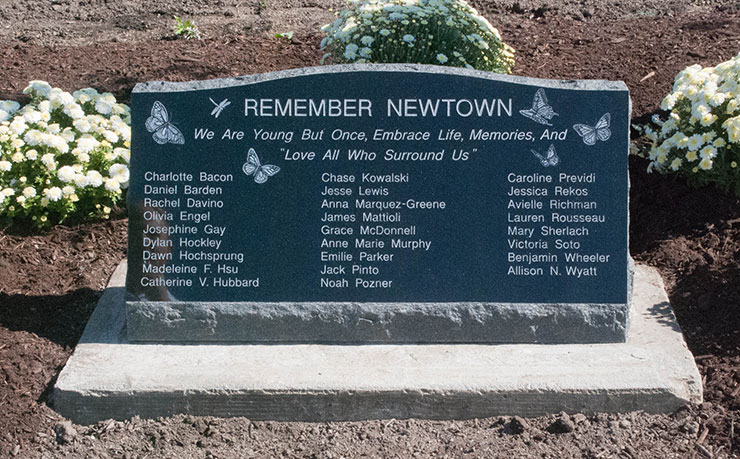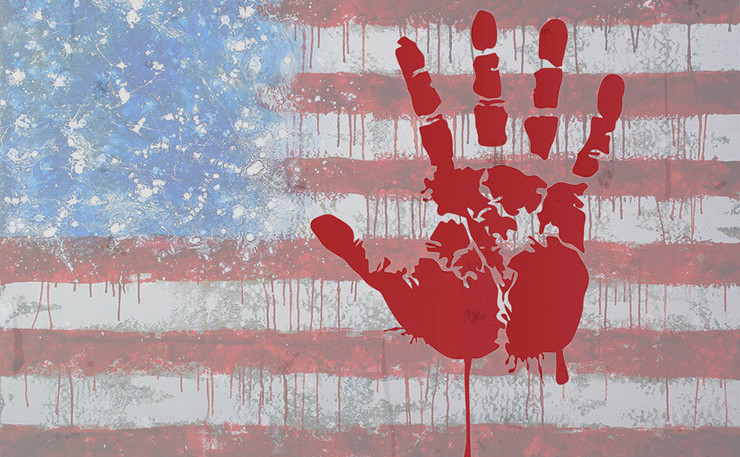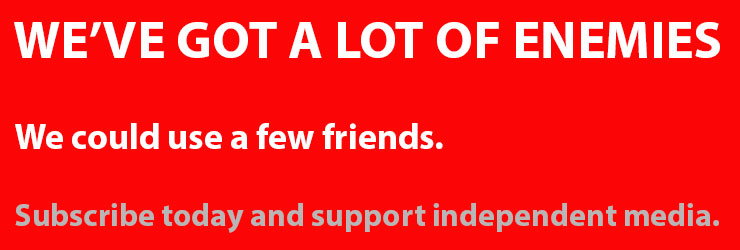If you think the latest horrendous mass shooting in the United States will cause a shocked nation to stop and take stock, then you know very little about the history of American gun culture, or politics. Chris Graham reports.
At least 58 people have died overnight in Las Vegas, Nevada in yet another mass shooting in one of the world’s most violent nations.
Perched on the verandah of a room on the 32nd floor of the Mandalay Bay Hotel and Casino, Stephen Craig Paddock, a 64-year-old local white man, opened fire on a crowd of 22,000 people at the adjacent to the Route 91 Harvest Festival.
Media are widely reporting the attack as the worst gun massacre on American soil. Of course, it’s not even close to that – thousands were slaughtered in single assaults in the long-running war against Native Americans.
But whatever the truth, here are 58 facts which help explain why the tragedy will prompt no real change to American gun laws.
1. Americans like their cars almost as much as they like their guns, which is why, a few years back, the National Rifle Association – the peak body for gun owners in the United States – produced a set of bumper stickers with the simple message, “I’ll give you my gun when you pry it from my cold, dead hands”.
2. The phrase is actually based on a 1976 Senate report into juvenile delinquency. And it wasn’t invented by the NRA.
3. It was coined by the Citizens Committee for the Right to Keep and Bear Arms, the lobbying affiliate of the Second Amendment Foundation, both of which boast a membership base of well over half a million people.
4. The phrase gained major popularity in May 2000, when actor Charlton Heston, then president of the National Rifle Association, lobbied hard against the election of Democratic nominee Al Gore.
5. Heston told a national conference in Carolina, “For the next six months, [Al Gore] is going to smear you as the enemy. He will slander you as gun-toting, knuckle-dragging, bloodthirsty maniacs who stand in the way of a safer America. Will you remain silent? I will not remain silent.”
6. Heston picked up a replica of a flintlock long rifle and continued: “So, as we set out this year to defeat the divisive forces that would take freedom away, I want to say those fighting words for everyone within the sound of my voice to hear and to heed, and especially for you, Mr. Gore: ‘From my cold, dead hands!’
7. The year before Heston’s infamous speech, there’d been three mass shootings – in Florida, Hawaii and Georgia – claiming 21 lives, and injuring another 16.
8. At this point, it’s important to understand what a mass shooting actually is (news site Mother Jones does some of the best work on monitoring mass shootings in the US).
9. While there is no universally accepted definition of what constitutes a mass shooting, one widely accepted version is that it’s a single event, perpetrated by a gunman/s that claims four or more lives.
10. And I say ‘gunman’ deliberately – there have only ever been three modern mass shootings in the US perpetrated by females.
11. Mass shootings actually account for a very small fraction of total gun deaths in the US – less than half of one percent of annual deaths.
12. 1999 – the year before Heston’s speech – was actually one of the lowest on record for gun deaths. 10,828 people died by gun from homicide, and another 16,599 died by suicide.
13. But since then, more than half a million Americans have suffered a firearm related death – 200,000 of them by homicide.
14. One of the most startling statistics – and one of the most damning in terms of predicting any response from American authorities – is that of the 91 mass shootings in the US since 1982, 15 have been at schools and universities.
15. 146 people have died, not including the shooters, and another 181 have been injured.
16. The most infamous was in 2012, at the Sandy Hook Elementary School in Newtown, Connecticut when 20 children aged between six and seven were slaughtered.
17. In response, Connecticut banned the sale of magazines capable of holding more than 10 rounds of ammunition. It also introduced laws requiring universal background checks for anyone purchasing a gun. But in the end, only five states passed stricter gun laws.
18. By contrast, 10 states loosened restrictions.
19. Six months after Sandy Hook, this debate occurred on CNN, between host Piers Morgan and radio shock jock Alex Jones.
20. It’s a genuinely unhinged interview (particularly 3 mins in), but it’s a reasonable representation of the views of many American gun owners, and the depth of their passion, and their denial.
21. This report on gun laws from The Atlantic for 2016 sheds some important facts, particularly in light of the reality that one of the 10 guns used overnight (police found a stash in Paddock’s hotel room) – while yet to be formally revealed – was obviously a high capacity automatic weapon.
22. “As of 2016, there were no federal laws banning semiautomatic assault weapons, military-style .50 caliber rifles, handguns, or large-capacity ammunition magazines, which can increase the potential lethality of a given firearm. There was a federal prohibition on assault weapons and high-capacity magazines between 1994 and 2004, but Congress allowed these restrictions to expire.”
23. Many Americans also believe they have God on their side. Preacher Bryan Fisher responded to Sandy Hook by claiming that the push by Liberals to make schools secular – to get religion out of public classrooms – was the reason behind the massacre. Because “God doesn’t go where he’s not wanted”.
24. The people at the forefront of the debate to loosen gun restrictions are invariably white. But contrary to popular belief, white people are not over-represented in the mass killing statistics.
25. Depending how you crunch the numbers, whites make up about two thirds of the American population as at July 2016, but they account for about 55 per cent of mass shootings since 1982.
26. (As an aside, America is probably not the racial mix you think it is – the largest group by ancestry is actually German (14.7%). The second largest is African Americans (at 12.3%)).
27. Of that population, gun ownership in America has been steadily declining since the mid 90s, when just over half the nation’s households had a firearm in their home.
28. Today that figure sits at just 39 per cent.
29. At the same time, support for stricter gun laws has also dropped. In the early 1990s, 78 per cent of Americans thought the laws covering the sale of firearms should be made more strict, but that figure has been dropping exponentially for years.
30. A week after the Sandy Hook massacre, 58 per cent of Americans – the highest number in more than a decade – believed gun control should be tightened. But many Americans have a high tolerance for, and a short memory of, shocking gun violence.
31. Today, that figure sits at just 55 per cent.

32. It’s still obviously a majority of the population, but, significantly, 34 per cent of Americans believe the laws should remain as they are, and 10 per cent believe they should be relaxed even further.
33. By contrast, in 1990, just 2 per cent of the population wanted looser gun laws, and 17 per cent thought they should remain as is.
34. The polarization of the American people around gun violence comes as the number of deaths from firearms continues to climb.
35. In 2015 alone, 36,252 people died by firearm. That’s the equivalent of one ‘September 11’ every month.
36. But believe it or not, America’s culture of gun violence isn’t the worst on earth. It’s routinely described as the worst in the developed world – and it is – but UN statistics reveal the United States ranks 11th in the world in terms of the rate of firearm related deaths.
37. For every 100,000 people, about 10.54 deaths per year will be related to a firearm.
38. Honduras is almost seven times worse than that, at 67.18 deaths per 100,000.
39. Those figures relate to total gun deaths, including suicide. But if you look purely at homicides, the US is ranked 18th.
40. That’s the ‘good news’. The bad news is if you look at suicides, the US is the second worst on earth, beaten only by Montenegro.
41. As you might expect, the official statistics also reveal that states in the US with more guns have more gun deaths.
42. State’s with the tightest gun laws have fewer deaths.
43. But efforts to curb gun ownership face major political and economic hurdles. American makes up less than 5 per cent of the global population, but accounts for more than half of the world’s civilian-owned guns.
44. Today, there are almost 89 guns in America for every 100 residents. The next closest country is Yemen, with 55 per 100 residents.
45. And then there’s the economics.
46. In 2015, the US gun industry was estimated to contribute about $43 billion towards the American economy.
47. Of course, the cost of gun violence far outstrips the benefit of gun sales.
48. In 2012, fatal and non-fatal gun violence was estimated to cost the US $229 billion, more than five times the stimulus to the economy of gun sales.
49. That figure represents about 1.4 per cent of the US’ total gross domestic product.
50. Perhaps most significantly, the gun industry is big business for politics.
51. Last year, the NRA reported revenues of $433.9 million, and it has more than 5 million members.
52, It spent more than $30 million supporting the election of president Donald Trump, who has strong ties to the organisation.
53. And overnight, stock prices of gun manufacturers began to rally, like they always do after a mass shooting.
54. By tomorrow, on average, 315 more people will have been shot, and 93 people will die as a result. That’s almost twice the number killed in Las Vegas.
55. Seven of the dead will be children and teens, and by the end of the month, around 50 women will have been shot to death by intimate partners.
56. As a nation, America is perpetually at war. It is unarguably responsible for more deaths worldwide than any nation in recent history.
57. But while it continues to wreaks havoc on the globe, American is also a nation at war with itself.
59. That’s not about to change any time soon.
Donate To New Matilda
New Matilda is a small, independent media outlet. We survive through reader contributions, and never losing a lawsuit. If you got something from this article, giving something back helps us to continue speaking truth to power. Every little bit counts.







